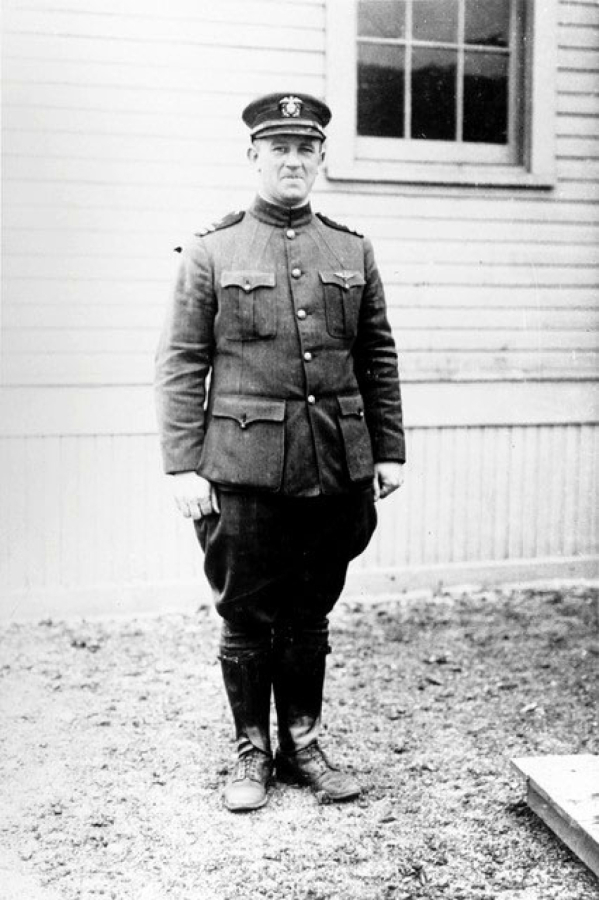Louis Barin was a big man, overflowing the cockpit of his airplane. At 250 pounds, he was nearly twice the weight of other youthful aviators at the Vancouver Barracks polo grounds aviation camp. But he was there every evening. Later, Barin would make his mark in aviation by becoming one of the first naval aviators. He was the last of the early pilots to fly from Pearson Field before World War I.
Oregon-born Barin attended Pacific College, studying pharmacy. A 1910 Meier & Frank window display in downtown Portland promoting a model airplane contest hooked him on flying, even though he didn’t win.
At first, when building full-sized airplanes, he also failed several times. He chopped his failures into kindling, which he stored in his Portland basement. In the summer of 1915, he worked for months building an airplane. When he completed it, he flew over Vancouver several times.
The Oregonian reported Barin spent three years and $3,000 constructing a monoplane in Portland and hauled it to the barracks. One flight skimmed close to the ground over Vancouver’s business section, rising higher as he turned toward the Columbia River.
When he held an exhibition flight at the Rose City Speedway, he lifted off from Vancouver and flew low toward Portland in the early evening. During the flight, he dropped hundreds of small advertising cards and complimentary tickets promoting a race.
To assure the Oregon Naval Militia that he was air-corps fit, Barin demonstrated his skill at the Vancouver Barracks polo field in January 1916. The officers acknowledged his effort and presumed his physical ability would serve him well as an aviation officer. Nevertheless, they said he must meet the 190-pound weight requirement, a challenge he met. His flying and weight loss impressed the Oregon Naval Militia, which commissioned him as an ensign in July 1916. The group put him in charge of the emerging Oregon Naval Militia Aviation Corps as chief mechanic.
During World War I, Barin taught aeronautical theory at Pensacola flight school, training hundreds of U.S. Navy pilots. He also tested new aircraft for the Navy, earning him the nickname “Daredevil Barin” for his risky flying. He flew the NC-1 and its crew across the Atlantic as far as the Azores, where he crashed the flying boat in rough weather.
Once while he was flying an experimental aircraft at 6,000 feet, the plane turned over and began falling. Barin kept his head during the speedy descent, trying to regain control. A few hundred feet above the water, he wrenched it back from the beast. His goggles and helmet were gone when he landed, and the force of the rapid descent from that altitude shredded his clothes.
When an Army flight cadet hit Barin’s high-speed test plane over the San Diego naval airfield, he died instantly, and his mechanic received severe injuries.
The June 1920 newspapers around the country celebrated Barin as “one of the most experienced fliers in the navy” and praised his piloting of a Curtiss NC-1 across the Atlantic, for which he won the Navy Cross, that service’s second-highest award for valor.
Martin Middlewood is editor of the Clark County Historical Society Annual. Reach him at ClarkCoHist@gmail.com.



